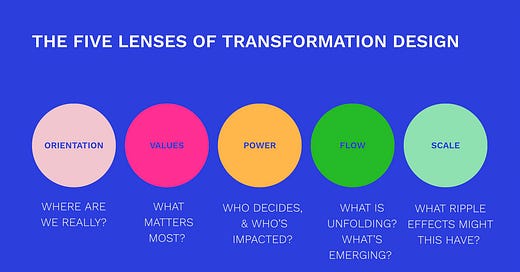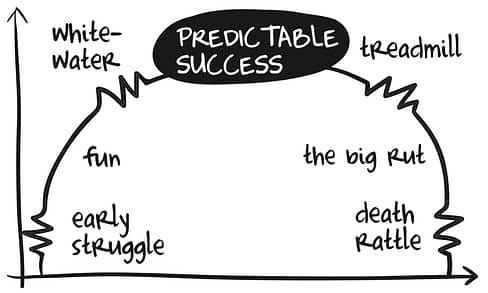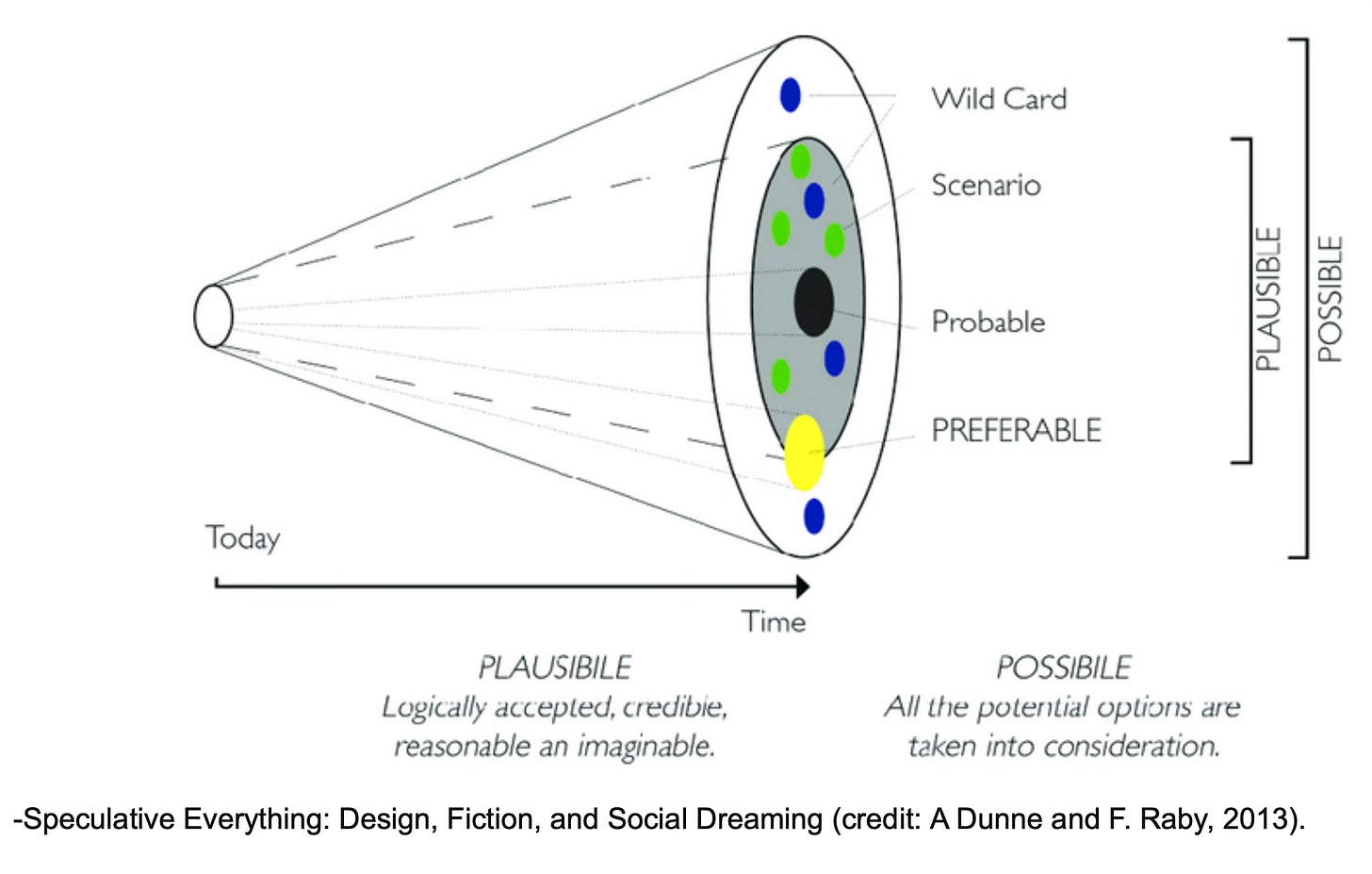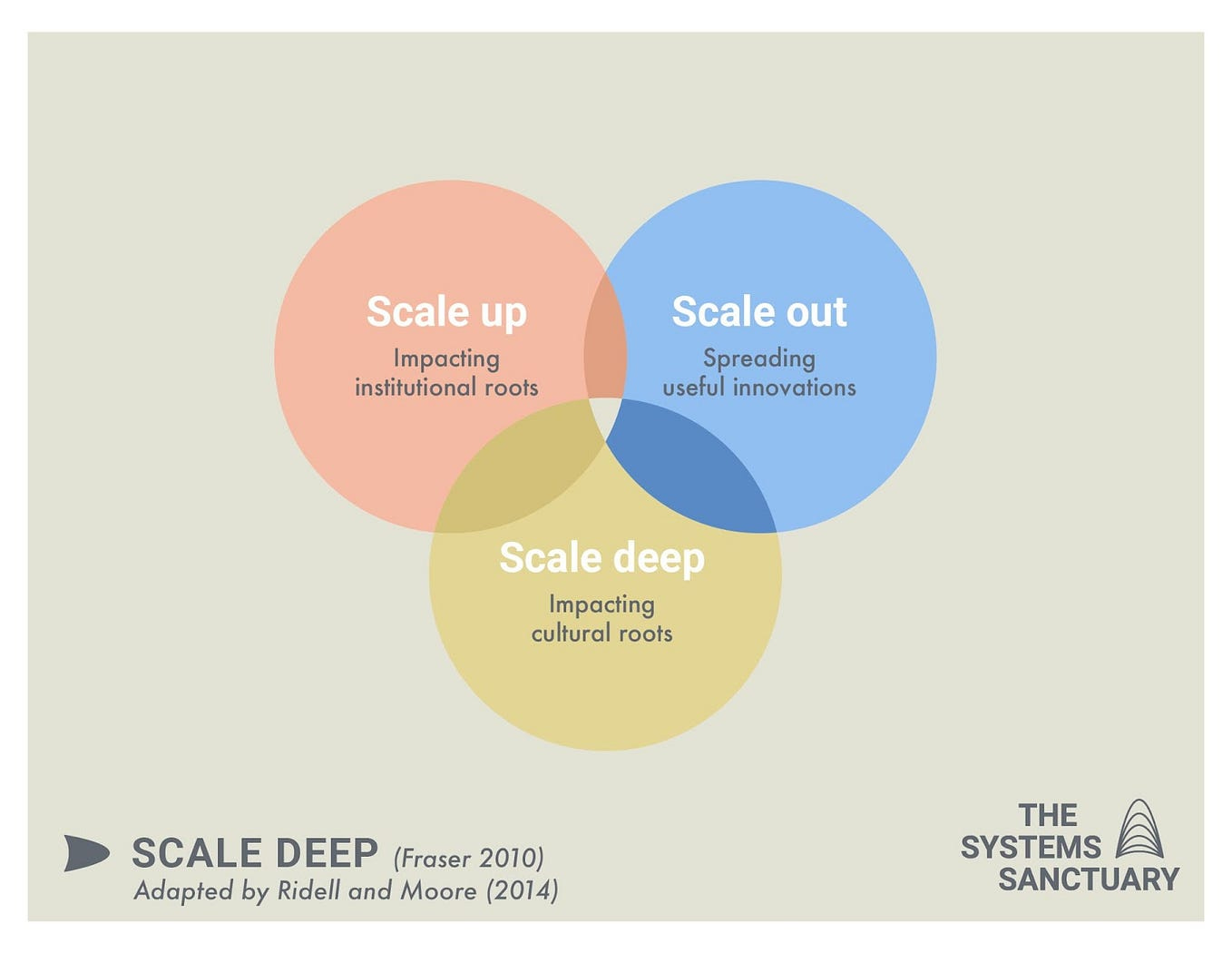Natural Metaphors: What Water Can Teach Us About Transformation Design
💧🌊 Navigating change: how the fluidity of values-led design transforms our future
If the future is fluid, let’s learn to flow with intention
Design is not a fixed process, it’s a fluid discipline. It doesn't promise predictable outcomes like a formula might. And that’s precisely its strength. Because when we treat design like a rigid map, we miss the real terrain. But when we treat it like water (adaptive, values-led, responsive), we gain a way to navigate the uncertain, the emergent, and the transformational. In liminal times like these, using this analogy can help to keep us going and keep us centered on what matters.
Just like water shapes landscapes over time, design shapes futures. Not with force, but through flow. Instead of following the current, we can choose how and why we move. There is so much power in this!
Design is not the current, it’s the helm
In my book Change Ahead, I wrote about “the current”: the mainstream pull of doing things the way they’ve always been done. Going with the current often means getting swept up in hype or habit. It’s easy, familiar, automatic. But true transformation requires something else. It asks us to steer. To be intentional. To design.
Design is the helm that lets us navigate change, and not go adrift.
A designer in transformation observes the river, reads the flow, and makes conscious choices. When we shift from drifting to designing, we regain agency in the face of change. We become participants in the journey.
Values-based design
Values-based design is a human-centered approach that prioritizes the values and principles that guide a project or organization, rather than just focusing on functionality or aesthetics. It’s about aligning the design process with a set of core ‘ethical’ (for lack of a better word) beliefs, such as equity, sustainability, inclusivity, and social responsibility. And aligning actions and decisions to those values.
This influences how solutions are created and the impacts our designs have on people, communities, and the environment. Rather than merely meeting pre-defined goals or outcomes, values-based design encourages us to ask deeper questions: How can this design serve the collective good? How does it address both current needs and future challenges? Why do it? Who will it impact? How does it support life?
By centering on values, this design approach delivers meaningful, transformative change that resonates beyond immediate results, creating solutions that are both innovative and aligned with a broader societal purpose.
One of the most difficult things to embrace in these kinds of processes is the concept of time. Most of the people in my network are working towards results: whether for profit or in the (semi) pubic sector. We live in cultures of accountability that do not excel in the long game. But transformation is about consistency, alignment and perseverance as much as it is about results. Because every step is a step in the direction of an outcome that is values based. So the point is not speed nor growth. Those are uninteresting in the face of consistency and strength.
Which brings me back to the water analogy I started this article with. Water is powerful because it flows consistently. And that is something we can all learn from and be inspired by. It can help us redefine success. Transform its definition, even.
Fluid forms of transformation
Natural landscapes shaped by water offer powerful metaphors for how transformation occurs. Each one reflects a different dynamic in transformation and shows how design, when values-led, helps us adapt and thrive.
🌊 Rapids: In moments of fast-paced, turbulent change, like a company pivoting or a society in crisis, we need short-term agility. In these rapids, we can’t control the speed; but we can design for resilience, safety, and responsiveness. Think life jackets, versus anchors. This kind of change needs us to move and reorient with the flow around us.
🌾 Deltas: Deltas are places where the river branches into many paths. They represent complexity and divergence: multiple futures forming all at once. Here, design helps us explore options and align with values, so we don’t lose ourselves in the mess of choice. Embracing the breadth is critical here: we need a compass rather than a clear-cut map, because the journey ahead is less about following a predetermined route. In deltas, the flow of design is like a network of pathways that emerge in response to shifting currents. By aligning with core values, we ensure that each turn and decision contributes to a larger vision, even if the future isn't fully visible yet.
🌴 Oases: Oases are moments of clarity, peace, and renewal. They remind us that rest is essential in transformation. Design can help us create oases in our organizations, communities, and personal lives through spaces that reconnect us with purpose. Think of recharging rather than charging through. Recognizing that it is a long road to transformation, oases provide the moments of reflection and rejuvenation needed to sustain our energy and vision. In design, this means creating spaces and practices that invite pause and mindfulness. Places where we can step back, reconnect with our values, and gain clarity on the path forward. Oases remind us that progress doesn’t always require relentless forward motion. Often, it’s in the stillness and the quiet moments that the most profound insights emerge.
🌀 Swamps: Swamps are murky, hard to navigate, and in them we feel stuck. But swamps are also incredibly alive, and rich in biodiversity. In ‘stuck’ moments, design helps us to notice what’s emerging, and find unexpected paths forward. Sometimes, that’s where innovation lives. Think of swamps as ecosystems of possibility rather than barriers to progress. Instead of muddling through, explore the richness of these moments, using the opportunity to reorient and realign as we discover hidden potential, recognizing that even when progress feels slow, there’s often more beneath the surface, waiting to be uncovered. Swamps remind us that transformation is a winding journey full of unexpected growth.
🏝 Archipelagos: Archipelagos are made up of many islands; separate, yet connected. They reflect the need for decentralization and distributed design. In complex systems, we can’t always centralize control. We need multiple nodes of creativity, experimentation, and leadership. Think of archipelagos as networks of possibility rather than isolated challenges. Instead of relying on a single source of perspective, design encourages us to empower different voices, ideas, and stakeholders, recognizing that true transformation arises when many hands shape the future. In decentralized systems, collaboration and fluidity between ‘islands’ can create dynamic, resilient solutions that adapt and evolve over time.
Predictable success ≠ predictable process
Business strategist Les McKeown talks about the state of “Predictable Success”: a condition where teams and organizations consistently achieve shared goals. But there’s an important twist to this model: success nowadays is not a result of predictability, it’s a product of alignment. Of flowing together with clarity of purpose.
McKeown highlights 7 phases, each one with its unique skills and capacities to deal with the outer context of change.
While this model assumes that some sort of stability is attainable (which is frankly outdated), its strength is in showing how situational our adaptability needs to be in order to serve us as a coping mechanism in the face of change. He highlights these 7 phases, which link to business success but apply to all kinds of endeavours:
• Early Struggle: where you're trying to get your idea afloat and validate your market.
• Fun: where your sales are starting to take off.
• Whitewater: the growing pains as you shift focus from sales to profitability.
• Predictable Success: the ‘zone’ in which what you do is aligned with the world around you.
• Treadmill: whereyou become risk-averse and dependent on processes and policies.
• The Big Rut: where processes and administration outweigh action and results.
• Death Rattle: where a bankruptcy reorganization or being acquired happens.
McKeown’s “Predictable Success” model focuses on the idea of achieving consistency, but in today's world, it's adaptability and values-alignment that are essential. The real measure of success now lies in how well an organization or group of individuals can respond to uncertainty, learn from disruption, and continually realign with core values.
This shift acknowledges that the world isn’t about being in one sweet spot indefinitely. It's about navigating through change, staying grounded in values, and evolving in a way that aims for connection and shared success. It's no longer about a fixed state of success, but a continuous cycle of adaptation that thrives on values-based leadership. This kind of (design) leadership requires organizations and individuals to be ever-vigilant, responsive, and proactive in creating environments where transformation is continuous.
Reaching ‘success’ is not about enforcing rigid processes, but about cultivating a shared understanding of what matters and co-designing towards it, one project at a time. That’s the work of values-based design.
Values over outputs
Processes give you outputs. Values give you outcomes.
If we design by following a step-by-step process, we might create something efficient, even elegant. But will it matter? Will it endure? Will it serve? In transformation design, we begin with what matters (our values) and we let those guide our choices, tools, and talents.
This is especially crucial in social transformation and systems change work, where outcomes are messy, human, and co-created. Designing with values means knowing what we stand for before we decide how to move forward.
The Five Lenses of Transformation Design
To guide transformation in a fluid, values-aligned way, I’ve created a simple framework I call the Five Lenses of Transformational Design. These lenses help us look at change not as a linear project, but as a layered, living process. Each lens invites a shift in mindset, encouraging deeper awareness of context, values, and systemic impact:
Orientation: Where are we, really? This lens is about situational awareness. It invites us to zoom out before diving in. Understanding the wider landscape, the cultural climate, and the lived experiences that shape what’s possible. Without it, we risk designing in isolation with what is. When facilitating transformation processes I like to use tools like creative writing, meditation and walks in nature to help us orient to the context and the task.
Values: What matters most? This is the grounding lens. It asks us to name and commit to the principles we want to uphold: equity, dignity, sustainability, liberation, etc. They guide the design process from start to finish. It’s where ethics meets intention. Usually I facilitate this process using a set of cards that I’ve developed (but that would be an entire article on it;s own). Another way to do this is through the VIA questionnaire which you can find online, for example here. It is a nice tool that makes sharing in teams easier through a common language.
Power: Who decides, and who’s impacted? This lens helps us map the dynamics at play: who holds influence, whose voices are missing, and how we can redistribute decision-making power. Power-aware design prioritizes justice and inclusion. When working with this lens, I naturally gravitate towards stakeholder maps, you can find a how-to instruction here on Smaply. What’s most important here is the discussion and reflection around the stakeholder map and the things you and your team dare to make explicit as you use this tool. There is lots of insight to be gained from speaking truth to power.
Flow: How are things unfolding? What’s emerging? This is the process lens. It values responsiveness over rigidity, recognizing that transformational work evolves. Flow asks us to adapt, iterate, and stay in tune with shifting realities, while holding purpose steady. I quite like using Dunne & Raby’s “Cone of Possibility”, because as they have said in their book Speculative Everything: “Design speculations can act as a catalyst for collectively redefining our relationship to reality.” And while I don’t like the name “speculation”, I really believe that if we don’t consider our options, if we don’t imagine what’s possible… we can’t design it. The Cone of Possibility illustrates how design can explore not just probable or preferred futures, but also possible and even provocative ones. It encourages designers to challenge assumptions and expand the imagination, using speculative ideas to question the status quo and shape alternative futures.
Scale: What ripple effects might this have? This lens looks at systems. It encourages us to zoom out again and consider how small actions or changes interact with larger structures. What are we reinforcing? What are we disrupting? Are we designing for impact? We need to consider all the aspects of scale: the upscaling of systems, the spreading of innovations and the depth of scale that impacts culture. The place where these intersect, shows us the impact of scale. This is especially relevant because entropy is always something to look out for when we design: that is, the unintended consequences of our designs.
These five lenses for transformation are not steps to follow, but perspectives to hold. You can move between them, layer them, or zoom in on one depending on where you are in a project. Like water, they help us stay fluid but focused: while keeping us aligned with deeper meaning and direction.
Be like water, with purpose
Water always finds a way forward. So can we. But flow without direction is just drift. Transformation design is flow with purpose. Movement that aligns with meaning.
Let’s not go with the current. Let’s read the river, learn from the land, and design from the heart.
If you enjoyed this article, please leave a ‘♡’ and/or share it with others.
Buy me a coffee ☕
If you’d like to support my work please consider making a donation. I really appreciate it and it helps fuel my commitment and passion to write, speak and podcast. Thanks! 🙏
You may also like…
(R)evolution Through Play: Breaking Rigid Frames, Bending Towards New Realities
The art of bending, not breaking









